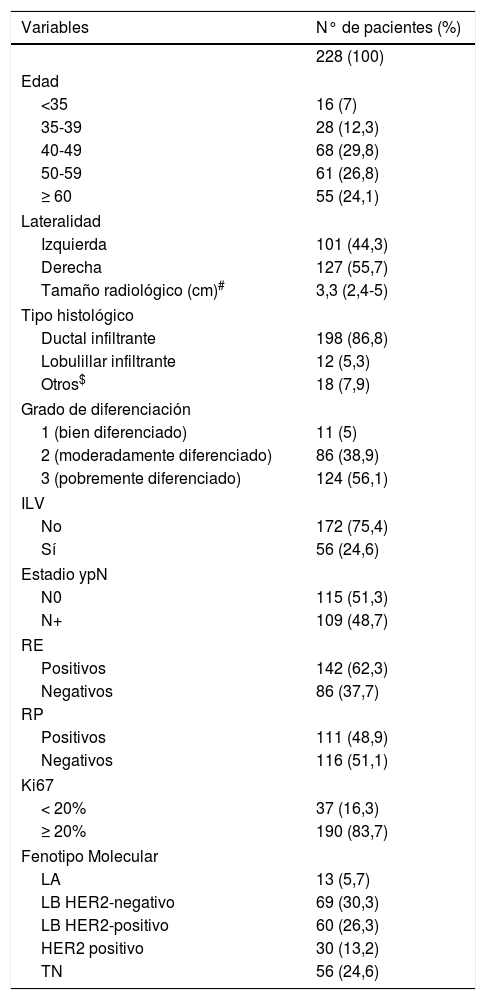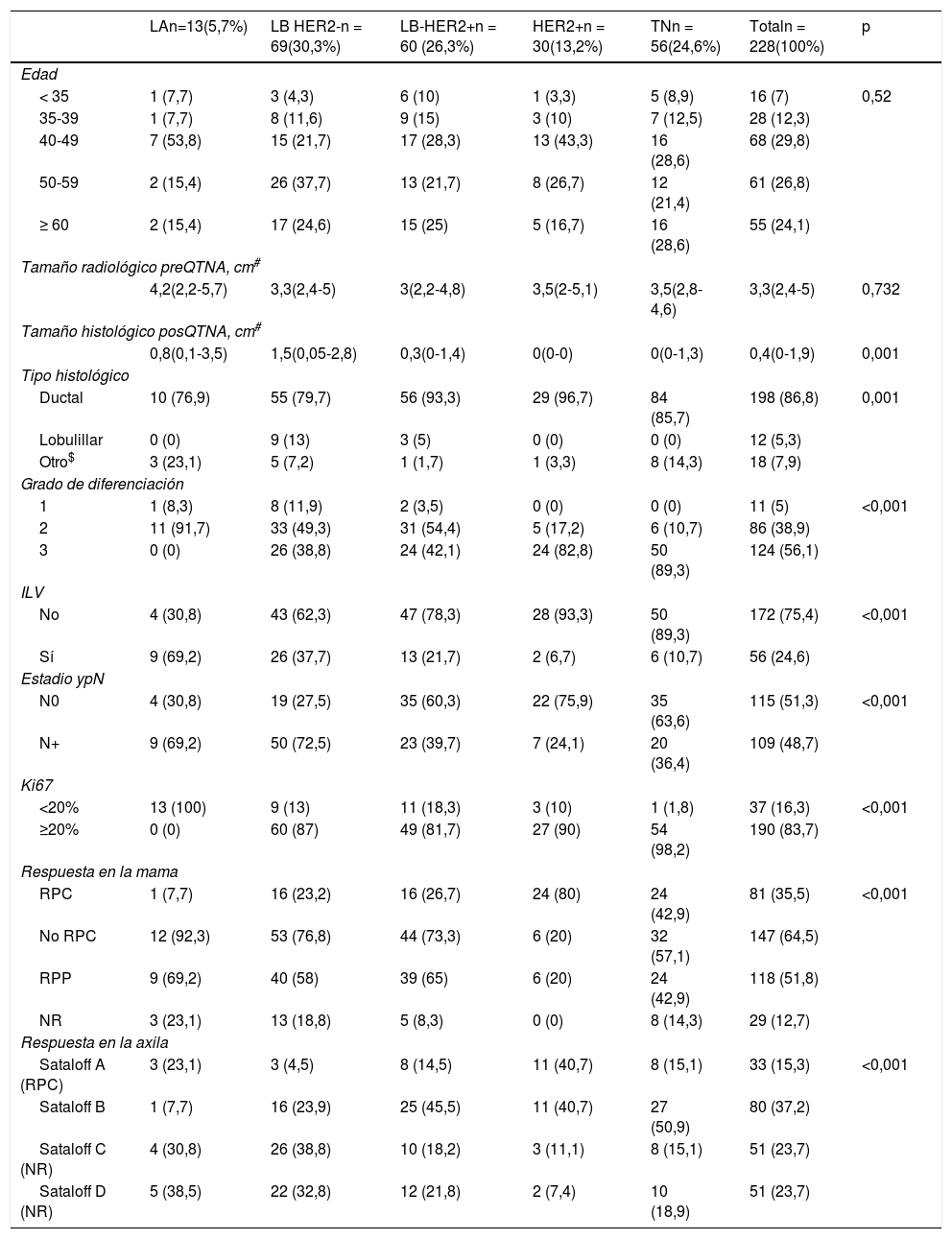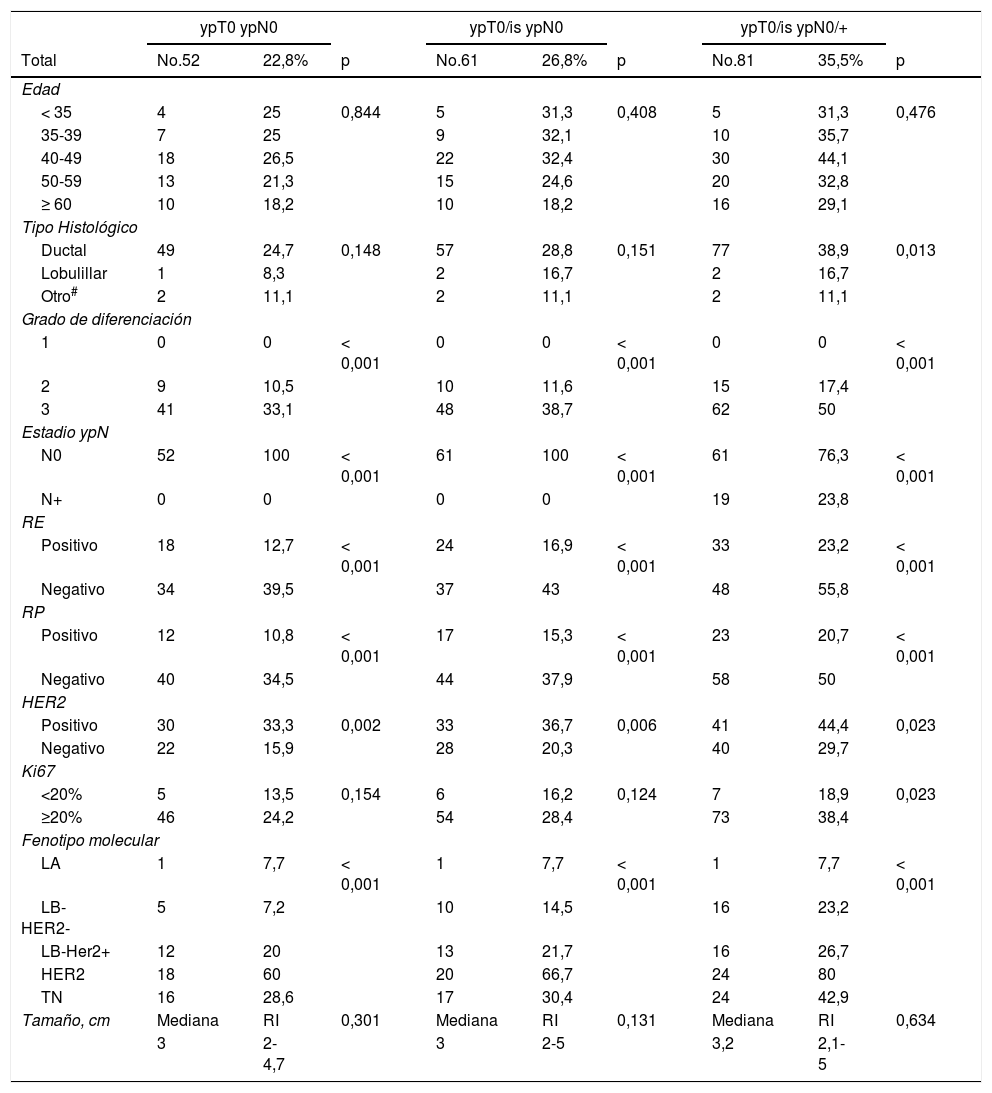El cáncer de mama se clasifica en distintos fenotipos moleculares con importantes implicaciones terapéuticas y pronósticas. La quimioterapia neoadyuvante (QTNA) aumenta las posibilidades de realizar una cirugía conservadora y permite testar in vivo la sensibilidad del tumor al tratamiento. Nuestro objetivo fue evaluar la respuesta patológica a QTNA con relación al fenotipo molecular y a las diferentes definiciones de respuesta patológica.
PacientesSe seleccionaron de nuestra base de datos de cáncer de mama 228 pacientes tratadas mediante QTNA y posterior cirugía entre 2012 y 2018. Los fenotipos moleculares se definieron según los criterios de la Conferencia de St. Gallen 2013. La respuesta patológica se evaluó según los criterios de Miller-Payne (mama) y Sataloff (axila).
ResultadosEl fenotipo molecular más frecuente fue el luminal B/HER2 negativo (30,3%), seguido del luminal B/HER2 positivo (26,3%), triple negativo (24,6%), HER2 positivo (13,2%) y luminal A (5,7%). Las tasas de respuesta patológica completa (RPC) fueron del 35,5% en la mama y del 15,3% en la axila. La RPC considerando mama y axila conjuntamente fue del 26,8%. El fenotipo con mayor tasa de RPC fue el HER2 positivo (66,7%), seguido del triple negativo (30,4%), luminal B/HER2 positivo (21,7%), luminal B/HER2 negativo (14,5%) y luminal A (7,7%) (p < 0,001). Estas diferencias se mantuvieron con las distintas definiciones de RPC evaluadas.
ConclusionesLa respuesta patológica a QTNA está condicionada por el fenotipo molecular tumoral, independientemente de la definición de RPC, con mayores tasas de respuesta en mama y axila en los fenotipos HER2 positivo y triple negativo.
Breast cancer can be classified into different molecular subtypes with important therapeutic and prognostic implications. Neoadjuvant chemotherapy (NAC) increases the possibility of performing conservative surgery and allows in vivo testing of the sensitivity of the tumor. Our aim was to evaluate the pathological response to NAC in relation to the molecular phenotype and the different definitions of the pathological response.
Patients228 patients treated with NAC and subsequent surgery between 2012 and 2018 were selected from our breast cancer database. Molecular phenotypes were established based on the criteria of the St Gallen 2013 Conference. Pathological response was evaluated following Miller-Payne (breast) and Sataloff (axilla) classification systems.
ResultsThe most frequent molecular phenotype was luminal B/HER2 negative (30.3%), followed by luminal B/HER2 positive (26.3%), triple negative (24.6%), HER2 positive (13.2%), and luminal A (5.7%). The rate of pathological complete response (pCR) was 35.5% in breast and 15.3% in axilla. The rate of pCR considering breast and axilla together was 26.8%. The molecular phenotype with the highest rate of pCR was HER2 positive (66.7%) followed by triple negative (30.4%), luminal B/HER2 positive (21.7%), luminal B/HER2 negative (14.5%), and luminal A (7.7%) (p < 0.001). The same results were found with the different definitions of pCR we evaluated.
ConclusionsComplete pathological response to NAC in breast cancer depends largely on the molecular phenotype of the tumor, regardless of the definition of pCR, with the highest response rates in the breast and axilla in the HER2 positive and triple negative phenotypes.










